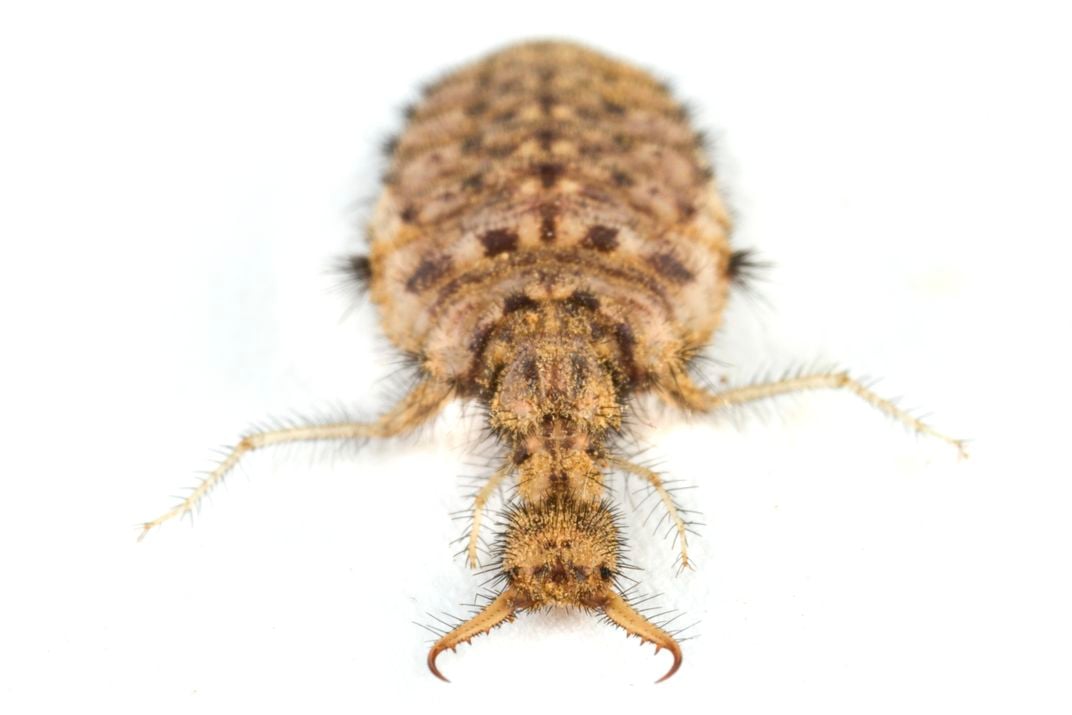Watch These Ants Hurl Themselves Out of Death Traps With Their Mouths
At least one trap-jaw ant species has coopted its exceptionally strong mandibles to escape its nemesis, the ferocious antlion
/https://tf-cmsv2-smithsonianmag-media.s3.amazonaws.com/filer/be/a2/bea2f215-2fd7-458e-af75-3c2c920c0b02/trapjaw.jpg)
It’s a trap! But after tumbling into a predator's sandy pit, some trap-jaw ants use their spring-loaded mandibles to literally hurl themselves away from danger. The finding, reported this week in PLOS ONE, confirms a suspicion researchers had back in 2006, when they showed that these ants use their lighting-fast jaws not only to catch prey but also to engage in “ballistic jaw propulsion.”
To arrive at these findings, entomologists Fredrick Larabee and Andrew Suarez at the University of Illinois at Urbana-Champaign turned to ferocious ant predators known as antlions.
The acrobatic battle begins with an ant’s fatal misstep. What appears to be a small indention in the sandy terrain is actually a death trap: a steep-walled pit engineered to funnel the ant to its doom. Lying concealed at the bottom is a real-life sarlacc, the antlion. Its hairy, bulbous body tapers into a low-hanging, beady-eyed head that is seemingly weighed down by two massive spiked mandibles. Those mandibles peak out of the sand like a bear trap, ready to snap shut around a hapless victim.
Once in the trap, an ant will inevitably try to clamber out, oftentimes to no avail. The sandy walls collapse beneath it, and each step forward leads to two steps back. If the ant seems to be making headway, the antlion will hurl sand at its victim from below, further destabilizing the pit walls and causing the ant to topple to the bottom. The antlion’s jaws snap, latching onto the struggling ant and pulling it down until the insect disappears from view.
Based on the 2006 findings, Larabee and Suarez suspected that trap-jaw ants could sometimes escape this scenario specifically with the help of their jaws. They collected trap-jaw ants and antlions from the field in central Florida. They allowed the antlions to dig new pits in containers in the lab and starved them for 48 hours, ensuring the predators would be primed for an ant meal. Then they introduced 114 trap-jaw ants individually into the antlion arena and tallied up the results of the encounters.

Trap-jaw ants fell victim to antlions about one-third of the time. About half of the escapees made it by running out of the pits. In 15 percent of the encounters, however, the ants did indeed summersault away by snapping their jaws against the bottom or side of the pit. The ants only used this tactic after the antlion had made itself known in a failed attack, indicating that it might be a last-ditch emergency escape method. The jaw jumps also only worked part of the time—the willy-nilly launches sometimes caused the ants to fall back down into the bottom of the pit, and many jaw-jumping attempts failed to hit the hot spot necessary for propelling the ants to safely.
Still, the jaw-jumping trick does seem to make a significant difference. The researchers glued 76 ants’ mandibles together, preventing them from using their jaws to jump. Ants with unrestrained jaws were almost five times more likely to escape the antlion pit than those that were hindered by glue.
While trap-jaw ants evolved their strong mandibles primarily to hunt prey and carry objects, the researchers think the spring-loaded jumps represent an example of a species coopting its physical assets for alternative purposes. While not all trap-jaw ants have been observed using this behavioral hack, for some species, at least, the clever adaptation can mean the difference between life and a terrifying subterranean death.
In this video Larabee and Suarez produced, you can see the summersaulting drama play out:
/https://tf-cmsv2-smithsonianmag-media.s3.amazonaws.com/accounts/headshot/Rachel-Nuwer-240.jpg)


/https://tf-cmsv2-smithsonianmag-media.s3.amazonaws.com/accounts/headshot/Rachel-Nuwer-240.jpg)